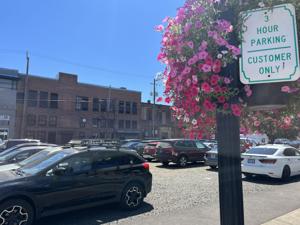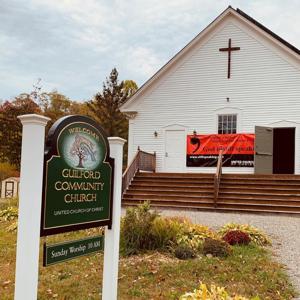
A significant redevelopment project in downtown Albany is progressing as the developer, Scott Lepman, has signed an option agreement to purchase the site of the former Wells Fargo Building. This agreement, finalized on May 29, 2023, allows Lepman Properties to explore revitalization plans for the property, although the completion of the project remains a considerable way off.
According to Albany City Manager Peter Troedsson, the option agreement is part of a broader effort by the Albany Revitalization Agency, which is influenced by the City Council’s urban renewal initiatives. Lepman will pay $3,500 per month for the option to buy the site, which has a total price of $310,000. The agreement includes a stipulation requiring a development plan to be submitted within a year, with a target completion date set for fall 2028.
Lepman, who has a history of involvement in downtown revitalization projects, including the repurposing of the Old City Hall and St. Francis Hotel, originally proposed a four-story mixed-use building encompassing commercial and residential spaces, along with parking facilities. While the project has faced delays, Lepman noted that such timelines are common in real estate development.
“Development takes a long time,” Lepman explained in a recent phone call, reflecting on the complexities of urban renewal. The proposed development is currently in the design phase, with Lepman discussing plans with the city’s Landmark Commission, which oversees development in historic districts. Initial feedback from the commission indicated concerns about the exterior facade design, which Lepman is working to address.
In 2019, the Albany Revitalization Agency acquired the old Wells Fargo Building for $1.5 million, initially intending to repurpose the structure. However, the decision was made to demolish it and open the site for mixed-use development proposals. The agency authorized the sale of the property to Lepman earlier this year for $310,000, a significant step forward in the revitalization effort.
Despite the progress, Steph Newton, Chair of the Albany Revitalization Agency and city councilor, expressed frustration at the length of time it has taken to finalize the agreement. “Now, we’re going to have another 18 months of it being a gravel lot,” she remarked. Her concerns highlight the ongoing challenges associated with urban development, which often involves lengthy negotiations and planning processes.
The Wells Fargo site currently serves as a parking lot, and Lepman has acknowledged that it lacks adequate infrastructure, which complicates the development process. He pointed to nearby power poles as a logistical hurdle that needs resolution. “If it were easy to do a project like this, there wouldn’t be a need for the Central Albany Revitalization Area to incentivize it,” Lepman stated.
The Central Albany Revitalization Area (CARA), established over two decades ago, aims to attract and support developers in revitalizing the downtown core. The district functions by freezing property values within its boundaries, allowing increased tax revenues from rising property values to be reinvested into the area. Once the district has paid off its incurred debts for grants and loans, it will cease operations, returning tax revenues to standard taxing jurisdictions.
As the Albany Economic Development Manager, Sophie Adams, noted, it remains uncertain whether Lepman’s proposed project will be the final development within the CARA framework. In the past decade, Lepman has received nearly $1.9 million in forgivable loans for various CARA projects, which include significant renovations of the St. Francis Hotel and Old City Hall Building. Additionally, he was awarded a $100,000 grant for a housing development project known as the Opera House Project, although he has yet to receive those funds.
In May, the Albany Revitalization Agency approved a new two-year budget for CARA, allocating $29 million for the upcoming biennium. However, much of this budget has already been committed to the city’s waterfront project, raising questions about the available funding for further developments.
As the city collaborates with consultants to assess the remaining resources of the urban renewal district, the community will be closely watching the progress of Lepman’s plans for the former Wells Fargo site. The outcome of this project could significantly impact the future landscape of downtown Albany.







